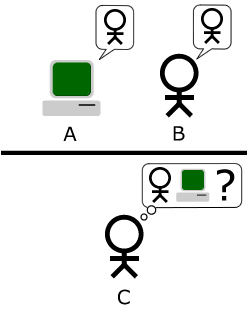Roblog is a weekly column dedicated to understanding the world of robotics. If science fiction is right and the impending robot apocalypse is real, it can’t hurt to be prepared. Come back every Wednesday for a new blog of robot rants.
Despite it pushing robots towards the ability to rebel, we humans really want robots to be able to talk. Our movies and cartoons are filled with talking robots, we have conversations with our cell phones, and artificial intelligence continues to be one of the fastest growing fields in computer science. People even talk online with programs like Cleverbot, an artificial intelligence chat robot that learns from previous conversations. Despite the fact that speaking is one of the most natural skills for people, programming those same skills into robots is quite the daunting task.

The idea to test how well robots could speak intelligently has been around for much longer than robots have had any chance in passing such a test. In 1950, Alan Turing proposed the idea for what is now called the “Turing Test” for measuring the intelligence of machines. In his original example, a human would engage in a text-based conversation with a human and an intelligent machine. After some conversation, the participant then must determine which was the person and which was the machine. Put simply, to pass the Turing Test, some significant number of participants must be convinced that the machine was actually a human.
As early as 1966, a program called ELIZA already looked like it was near passing the Turing Test. In the most well known version of the conversation, the machine posed as a doctor and talked to people about their medical problems. By looking for keywords in sentences and regurgitating information in preformed patterns, ELIZA was a very successful early chatterbot. Chatterbots like ELIZA try to simulate human conversation, usually somewhat casual small talk, by using everything from keyword recognition to complicated algorithms. Today, chatterbots are incredibly successful. Cleverbot, for example, is very close to passing the test at a 59.3% success rate for the machine and a 63.3% success rate for the humans it’s compared to.
The problem with current talking robots, however, is they don’t really have much to say. The Turing Test effectively only measures a robots ability to mimic humans. Creating intelligent, reactive speech in a robot is much more difficult. Take this common Linguistics 101 example: “Time flies like an arrow.” You probably easily determined that this is a metaphor about the passage of time. Give a computer this sentence, however, and it might end up with the much more humorous interpretation that is revealed by “Time flies like an arrow; fruit flies like a banana.” Speech generation is an equally hard problem. Most of the sentences a human might speak in any given day will never be repeated in that same form again. Spending a lifetime talking requires much more intelligence, creativity, and processing power than computers currently have.
This doesn’t mean that truly talking robots are impossible, but it will certainly be difficult. Thanks to the combined efforts of computer scientists, roboticists, linguists, and even psychologists, artificial speech capabilities are rapidly improving. As the Turing Test has shown for decades, robots are already very close to carrying on simple conversations just as well as people do. The fact that you can search for “talking robots” online and find many programs that are free to use, active projects is a testament not only to the human desire for talking robots, but also to the emerging importance of speech generation as a field of study. As talk bots become more realistic, be aware of who you are really talking to when you’re online. It might sound like silly advice now, but it’s likely to become a legitimate concern in the future as robots keep getting smarter (and more likely to rebel against us).


in a few weeks from now, the Loebner Prize contest, the first Turing test. will being organized for its 22th annual time.